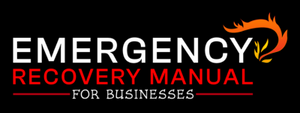· By Zoritha Thompson
5 Critical Documents to Include in Your Emergency Recovery Plan

When disaster strikes—whether it’s a fire, flood, cyberattack, or medical emergency—having the right information at your fingertips can make all the difference. A solid emergency recovery plan isn’t complete without essential documents that protect your identity, finances, and ability to respond quickly.
Here are five critical documents that every personal and business emergency recovery plan should include:
1. Identification Documents
Copies of government-issued IDs are essential for proving your identity, accessing emergency services, and verifying insurance claims.
What to include:
-
Driver’s licenses or state IDs
-
Passports
-
Social Security cards
-
Birth certificates
Why it matters: In the event of evacuation or a loss of physical documents, having copies ensures you can still access essential services and reestablish your identity quickly.
2. Insurance Policies
Your recovery process depends heavily on the ability to file insurance claims promptly. Keep updated copies of all relevant policies in one secure location.
What to include:
-
Homeowners or renters insurance
-
Auto insurance
-
Life and health insurance
-
Business insurance policies
Why it matters: Knowing your coverage, deductibles, and how to file a claim helps you act fast and avoid unnecessary delays or losses.
3. Financial Records
Disasters often impact your ability to access financial resources. Keep records that help prove ownership, access funds, and maintain financial stability.
What to include:
-
Bank account information
-
Credit card accounts
-
Mortgage and loan documents
-
Recent tax returns
-
Investment accounts
Why it matters: If systems go down or physical locations are inaccessible, having your financial details can keep you afloat and support your claims and recovery.
4. Property and Asset Documentation
These documents verify ownership and condition of your belongings, helping you get reimbursed accurately during a claim process.
What to include:
-
Deeds and titles (home, car, business property)
-
Inventory of valuable items (with photos or receipts)
-
Maintenance records
-
Appraisals for high-value assets
Why it matters: Detailed records can help you avoid disputes with insurers and ensure fair compensation or replacement of lost or damaged items.
5. Emergency Contacts & Legal Documents
In the chaos of an emergency, knowing who to call and having the right legal documents ready can protect you, your family, or your business.
What to include:
-
Emergency contacts (family, doctors, insurance agents)
-
Power of attorney
-
Wills or trusts
-
Medical directives
-
Business continuity plans (for business owners)
Why it matters: Clear communication and legal authority streamline decisions and keep things running when you may not be able to act yourself.
Bonus Tip: Store Them Safely & Accessibly
-
Keep physical copies in a fireproof/waterproof safe.
-
Store digital copies securely in cloud storage or encrypted drives.
-
Share access with a trusted person or advisor in case you are unable to retrieve them yourself.
Final Thoughts
Disasters don’t wait for you to get organized. Taking time now to prepare your emergency recovery plan documents is an investment in your future peace of mind. Whether you’re a homeowner, renter, or business owner, these five categories of documents will help you bounce back faster and with fewer complications.
Need a place to store them all?
Consider using the Emergency Recovery Manual to securely organize and access everything in one spot.
